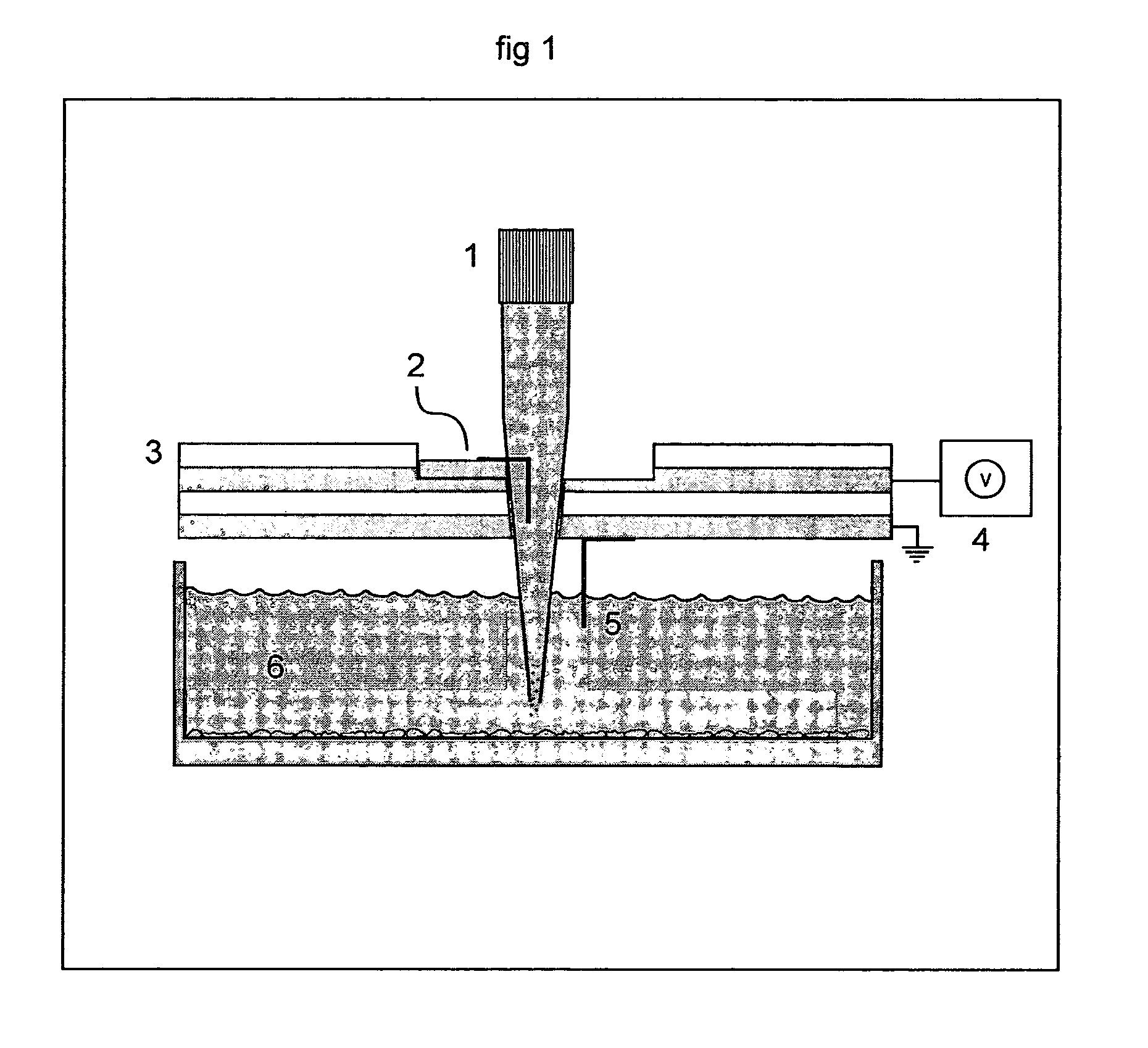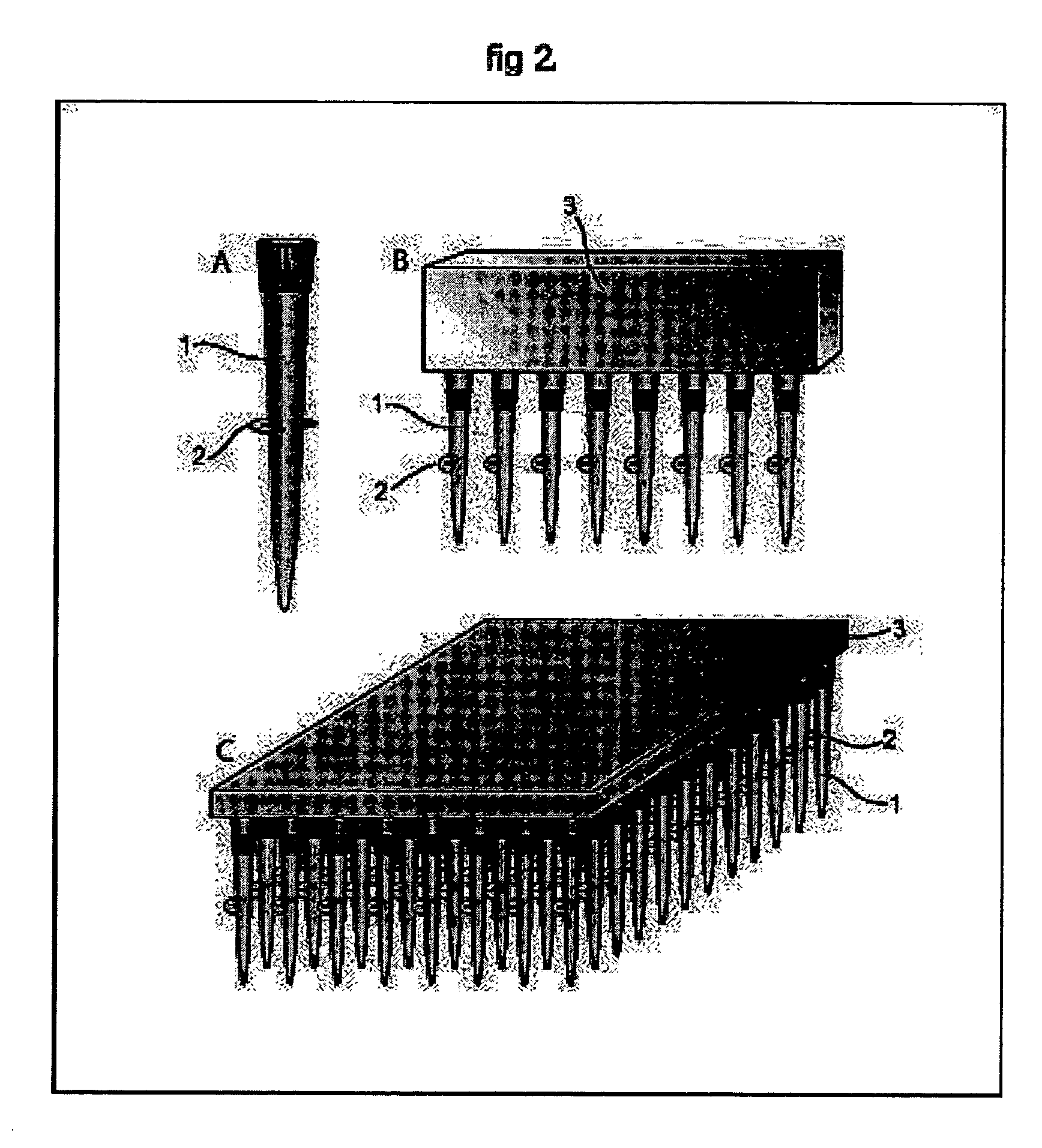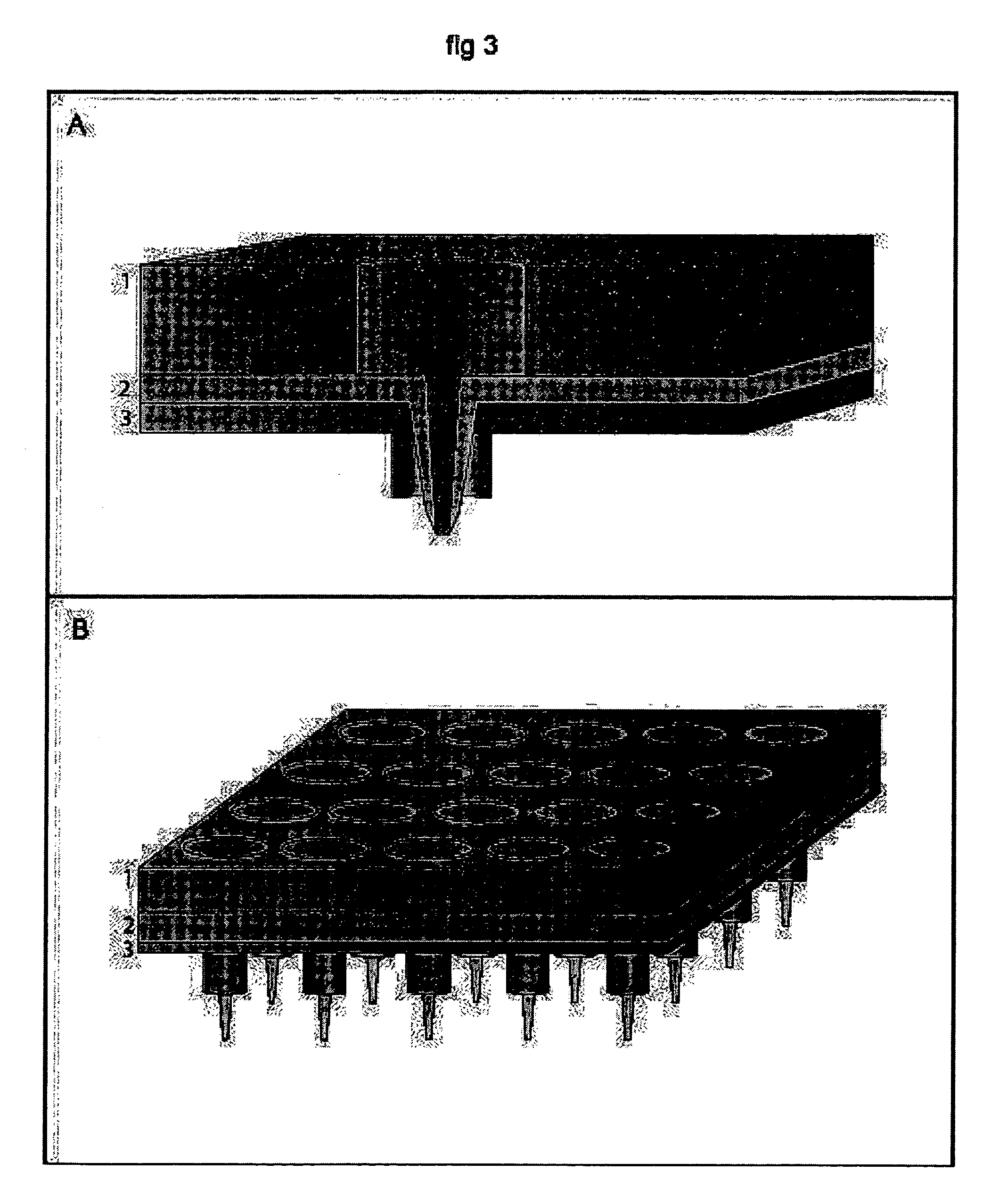Method and apparatus for spatially confined electroporation
a technology of electroporation and spatial confinement, applied in the field of spatial confinement electroporation, can solve the problems of difficult to label cells in cell culture with dyes, and difficult to introduce polar molecules into organelles. achieve the effect of increasing levels
- Summary
- Abstract
- Description
- Claims
- Application Information
AI Technical Summary
Benefits of technology
Problems solved by technology
Method used
Image
Examples
example 1
[0309]Electroporation of a Single Spot of Cells in a Confluent Culture galactosidase, PC-12 cells were cultured of standard procedures in conventional petri dishes. The cell culturing media was removed and replaced with a Hepes Saline buffer, pH 7.4, and the cell culture were transferred to the stage of an inverted microscope (Leica, model DMIRB equipped with a x-y translational stage). A tip-electrode manufactured from a conventional pipette tip with a platinum wire inserted horizontally to the interior of the tip, was filled with Hepes-saline buffer supplemented with 500 μM Fluorescein diphosphate (FDP). The tip-electrode was connected to a pulse generator (AM-systems isolated pulse stimulator, model 2100) via an oscilloscope for monitoring of the pulse. A counter electrode in the cell bath was connected to ground and the sign of the potential in the tip-electrode was negative. The outlet of the tip-electrode were positioned at a distance of 50 μm above the cell culture. The cells...
example 2
[0310]Parallel Electroporation of Spots in a Confluent Cell Culture PC-12 cells were cultured of standard procedures in conventional petri dishes. The cell culturing media was removed and replaced with a Hepes Saline buffer, pH 7.4, and the cell culture were transferred to the stage of the inverted microscope. Two tip-electrodes, connected to the pulse generator via a single rod inserted through both tips, were filled with Hepes-saline buffer supplemented with 500 μM Fluorescein diphosphate (FDP). One counter electrode was placed in the cell bath and connected to ground. The outlet of the two tip-electrodes were positioned at a distance of approximately 100 μm above the cell culture. Two spots of cells, under the two tip-electrodes, were exposed to 4×10 pulses of 100 ms duration, with a 100 ms delay time between pulses of 4 mA amplitude. FDP was transferred out of the tip-electrodes by electroosmotic forces, no additional pressure or pumping were added to the system. Detection and i...
PUM
| Property | Measurement | Unit |
|---|---|---|
| length | aaaaa | aaaaa |
| length | aaaaa | aaaaa |
| length | aaaaa | aaaaa |
Abstract
Description
Claims
Application Information
 Login to View More
Login to View More - R&D
- Intellectual Property
- Life Sciences
- Materials
- Tech Scout
- Unparalleled Data Quality
- Higher Quality Content
- 60% Fewer Hallucinations
Browse by: Latest US Patents, China's latest patents, Technical Efficacy Thesaurus, Application Domain, Technology Topic, Popular Technical Reports.
© 2025 PatSnap. All rights reserved.Legal|Privacy policy|Modern Slavery Act Transparency Statement|Sitemap|About US| Contact US: help@patsnap.com



